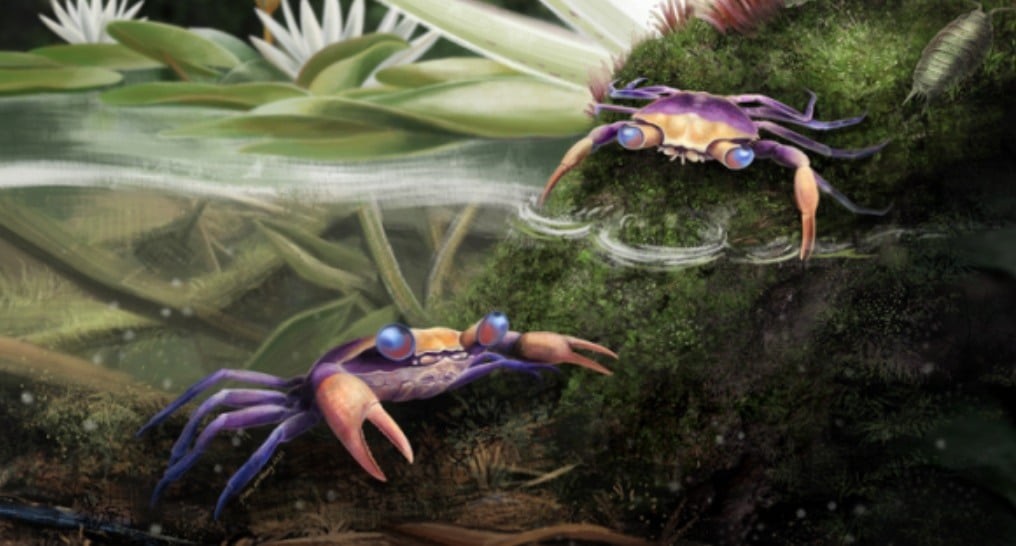A study of a 100-million-year-old piece of amber has found the oldest modern-looking crab.
The perplexing discovery has been the basis of a three-year investigation by Harvard University Department of Organismic and Evolutionary Biology post-doctoral researcher Javier Luque.
The amber was found in Southeast Asia, and trapped inside it was a 5mm/~quarter-inch modern-looking crab. The discovery led to researchers gaining a new understanding of the evolution of crabs over the millennia.
According to Luque:
“In a way, it’s like finding a shrimp in Amber… Talk about wrong place, wrong time.”
Explaining the gap this new finding fills, he added:
“If we were to reconstruct the crab tree of life — putting together a genealogical family tree — and do some molecular DNA analysis, the prediction is that nonmarine crabs split from their marine ancestors more than 125 million years ago. But there’s a problem because the actual fossil record — the one that we can touch — is way young at 75 to 50 million years old. So this new fossil and its mid-Cretaceous age allows us to bridge the gap between the predicted molecular divergence and the actual fossil record of crabs.”

